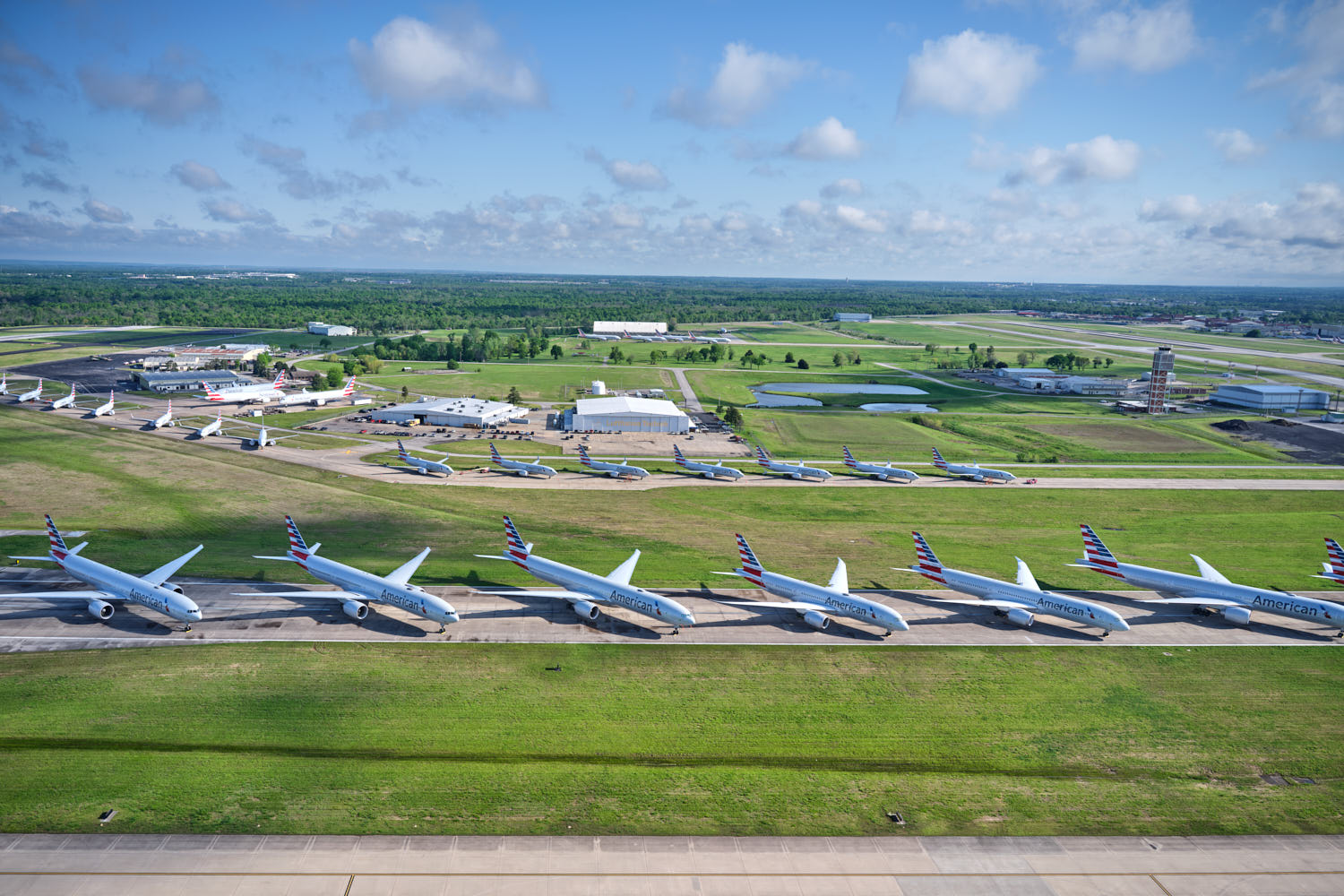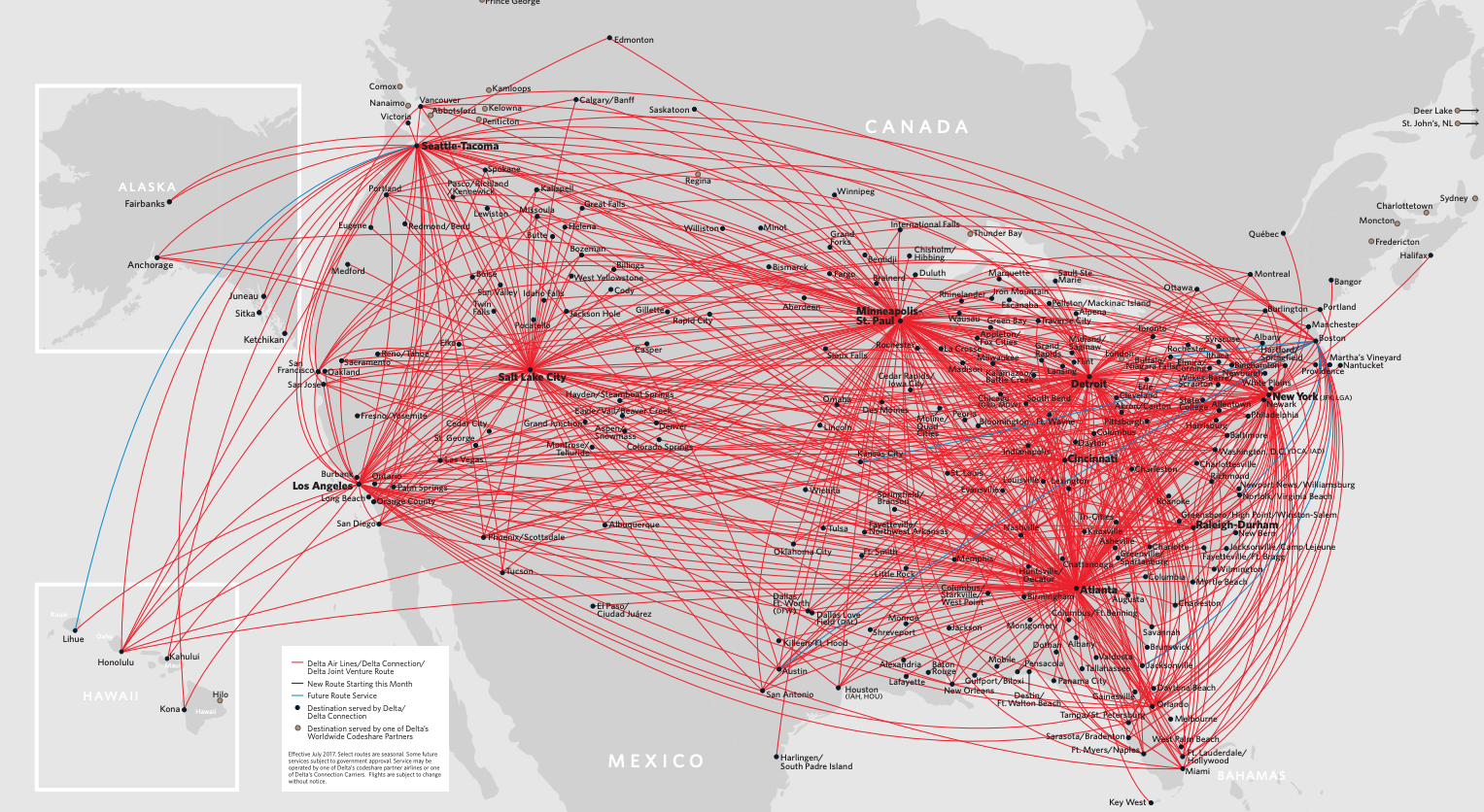One of the most unanticipated changes due to COVID-19 is the large number of new routes being announced by airlines. It seems to go against common sense to expand when demand is a fraction of what it was a year ago. However if you understand the many moving pieces involved in an airline adding a new route, now’s the perfect time for an airline to announce a new route.
Back at the beginning of the pandemic, when airlines were filling remote airports with parked aircraft, I wondered out loud if airlines would take the opportunity to reevaluate their networks. It was none other than Gary from View From The Wing who set me straight that such an endeavor is easier said than done. However, as the pandemic got worse and air travel almost came to a halt for months, airlines made some difficult decisions and cut what they could from their schedules (as allowed by government bailouts.)
Here are some reasons airlines didn’t often announce new routes that often before and why we’re seeing a flood of announcements right now:
Slot Restrictions
This was probably the most important thing keeping airlines from adding flights before the pandemic. Many busy airports like NYC-Laguardia and Washington National couldn’t physically accept any more flights. With the number of runways and gates available and Air Traffic Control limits, there’s a maximum number of flights that an airport can handle per day. For a new flight to start, one has to be removed from the schedule. Since airlines control a specific number of gates, what usually happened was a flight was only removed by an airline if a more profitable route could replace it.
But because of coronavirus, airlines cut a significant amount of their schedules at major airports worldwide. To do so, they also gave up the rights to some of their gates. That’s why we now see airlines moving to airports they weren’t servicing before. United is moving flights back to JFK. Southwest is adding flights to Houston International and Chicago O’Hare in addition to their flights to secondary airports in those cities.
Southwest’s reasoning for the move?
“It’s been on our wish list for a long time to supplement Midway,” Watterson said. “The reduced flying activity with COVID-19 left open space for us to jump in.”
JetBlue has taken advantage of the open gates to firm up its stake with starting flights from the US to London by acquiring slots at Gatwick and Stansted airports. They’re still hopeful about picking up some available slots at the previously packed Heathrow airport as well.
Every airline is getting into the game with Delta and Frontier also announcing several new routes.
Limited Aircraft
Airlines have a set number of aircraft. Each one of them has its own parameters of how far it can fly and the crew required. Older planes aren’t as fuel-efficient as newer ones, so it would only make financial sense to fly a plane on a route if you’ll be making money by doing so. Finally, planes are configured for the routes they are intended to be used on. You can’t take a plane flying to Asia and now fly it domestically in the US and expect it to make money.
With the pandemic, most of the airlines’ fleets were grounded. Planes of all shapes and sizes sat on the runways around the world.

Photo credit from Andy’s Travel Blog
There was no shortage of planes to be put into use on a new route since they definitely weren’t flying the routes they used to.
Route Networks
Try managing a map that looks like this and try to find a way for every plane to make it back and forth to these destinations.

And those are only domestic flights. You also have to manage to get flights to the major international hubs in time for passengers to make international connections.
Just changing one piece of the puzzle causes several new problems you need to solve. Now imagine that 2/3 of those lines are gone and you’re able to redraw them as you please. Airlines are no longer bound by their existing maps to create those lines and now have the best ability they’ll ever have to start from scratch. It’s too good of an opportunity to pass up.
Final Thoughts
There are other reasons airlines didn’t start flying new routes before the pandemic, like staffing issues, economic restraints and regulatory issues. Any of these could have prevented a new route in the past but the new normal allows many things that may have previously been stopped.
Is this a good thing or a bad thing for travelers? I don’t think we know the answer to that right now. I’d say it’s a temporary win for travelers once they’re willing to take flights again. The roadblocks to a free market previously in place have partially been removed due to the coronavirus. We’re now able to see what airlines wanted to do if not for the market’s limitations. Hopefully, that leads to an increase in competition, better onboard product and service at lower prices. That’s what a restriction-free market is supposed to provide, isn’t it?
Want to comment on this post? Great! Read this first to help ensure it gets approved.
#stayhealthy #staysafe #washyourhands #wearamask
Like this post? Please share it! We have plenty more just like it and would love it if you decided to hang around and get emailed notifications of when we post. Or maybe you’d like to join our Facebook group – we have 16,000+ members and we talk and ask questions about travel (including Disney parks), creative ways to earn frequent flyer miles and hotel points, how to save money on or for your trips, get access to travel articles you may not see otherwise, etc. Whether you’ve read our posts before or this is the first time you’re stopping by, we’re really glad you’re here and hope you come back to visit again!
This post first appeared on Your Mileage May Vary
Cover Image by Daniel Tsai from Pixabay

1 comment
yea all the chorus on how WN will utterly slit UA’s throat at IAH and ORD.
But then again, the chorus also said the same about WN at EWR, and we saw how well that worked out for them (and that’s WITHOUT UA engaging in some insane race-to-the-bottom fare war. Literally the ONLY metro where WN and UA compete at same-metro airports (counting only the relatively larger stations of WN) and were larger pre-COVID was BWI over IAD.
DEN
SFO/OAK
IAH/HOU
ORD/MDW
LAX
WN wasn’t ahead of UA in ANY of those 5.